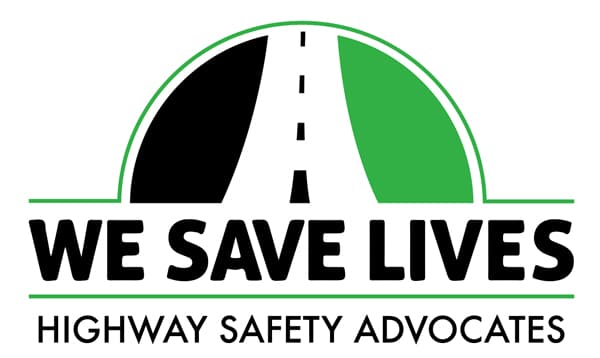The Need for Speed: How Speeding Leads to Avoidable Accidents
In the hustle and bustle of our fast-paced lives, we often find ourselves rushing from one place to another. Whether it’s commuting to work, running errands, or embarking on a road trip, the temptation to push the speed limit can be all too familiar. However, as an experienced truck accident and personal injury attorney, I know that for those who have experienced the aftermath of a wreck, the consequences of driving faster than needed are far from minor. I have seen way too many people who were killed or who suffered serious injuries as a result of speeding semis, dump trucks, garbage trucks, buses and other commercial motor vehicles.
Road safety should always be a top priority for every driver. Unfortunately, the desire to reach a destination quickly often leads to speeding, which triples the odds of crashing. Big trucks, with their longer stopping distances and limited maneuverability, are particularly vulnerable to the dangers of excessive speed. As a board-certified truck accident attorney, I’ve experienced firsthand that when a big truck is involved in a wreck, the consequences can be devastating, leading to severe injuries and even fatalities. Across the United States, on average, 33 people will die each day due to a speed-related crash, according to the National Safety Council.
The Need for Caution:
It’s crucial for drivers to recognize that exceeding the speed limit or driving faster than road conditions permit can have severe consequences, especially when it comes to large trucks. Big trucks, due to their size and weight, require additional time and distance to come to a complete stop or make sudden maneuvers.
- Reduced Reaction Time: Driving at excessive speeds significantly reduces a driver’s reaction time. In the event of unexpected obstacles or sudden changes in traffic conditions, a speeding driver may find it challenging to respond promptly, increasing the risk of collisions and semi-truck rollovers. Excessive speed is found in 45% of truck rollovers, according to the Federal Motor Carrier Safety Administration. As an experienced truck accident attorney, I’ve witnessed how dangerous semi rollover accidents can be, often resulting in severe injuries and fatalities.
- Braking Challenges: Big trucks have longer stopping distances. Speeding reduces the effectiveness of the braking system, increasing the risk of rear-end collisions or the inability to stop in time to avoid a crash. Know that every time your speed doubles, the stopping distance quadruples because of the laws of physics.
- Limited Visibility: Speeding reduces a driver’s ability to assess the road environment effectively. Driving at a speed that exceeds road conditions can compromise a driver’s ability to see and anticipate potential dangers. The Indiana University Public Policy Institute found that Indiana speed related crashes peak during the darker, morning hours of 1:00 m. and 3:59 a.m. when it is more difficult to see other drivers. This is particularly problematic when sharing the road with large trucks.
- Increased Severity of Accidents: When accidents do occur, the impact force in a collision is directly proportional to the speed of the vehicles involved. In Indiana truck accidents, occupants in large trucks were almost 5 times as likely to be injured when speeding (222 per 1,000) compared to truck accidents not caused by speeding (42 per 1,000). As a National Trial Lawyers Association Top 10 Trucking Trial Lawyer, experienced in trucking accidents, I have helped the victims of many preventable accidents caused by high speeds, which result in more severe accidents that caused greater damage to the vehicles and that caused serious injuries and fatalities.
- Reduced Control: Speeding reduces a driver’s control over their vehicle. The risk of losing control and causing an accident becomes significantly higher when driving faster than necessary. High speeds can contribute to jackknifing incidents, where a truck’s trailer swings out of control. As an experienced jackknife truck accident attorney, I know that these accidents can block multiple lanes of traffic, leading to multi-vehicle collisions with serious injuries and even fatalities.
- Legal Implications: From the perspective of a board-certified truck accident and personal injury attorney, collisions caused by driving faster than needed often lead to liability issues. The driver who exceeded the speed limit or drove too fast for road conditions may be held accountable for damages resulting from the wreck.
What can you do to lower the risk of a speed-related collision?
- Adhere to Posted Speed Limits: Always obey posted speed limits, especially in areas where they are lower, such as construction zones or residential neighborhoods. The next time you feel the urge to speed, remember the potential consequences and the lives that may be affected.
- Adjust Speed for Road Conditions: Adjust your speed based on road conditions, weather, and visibility. Reduce speed in adverse conditions to ensure better control of the vehicle. The winter months of December, January, and February consistently have the highest number of speed-related crashes due to reduced visibility in the darker weather and obstacles like snow and ice on the roadway.
- Maintain a Safe Following Distance: Keep a safe distance from large trucks to allow for ample reaction time. Remember that trucks have larger blind spots, and tailgating increases the risk of accidents.
The need for speed can have far-reaching consequences. It is our collective responsibility as drivers to prioritize safety, adhere to speed limits, and contribute to creating safer roads for everyone. Safe driving isn’t just a recommendation; it’s a commitment to protecting lives on the road.
David W. Craig is a board-certified truck accident lawyer and managing partner as well as one of the founding partners of the law firm of Craig, Kelley & Faultless LLC. He is also recognized as a Top 10 Trucking Trial Lawyer and Top 100 Trial Lawyer in Indiana by the National Trial Lawyers. David is the author of Semitruck Wreck, A Guide for Victims and Their Families, written to help victims and their families as they navigate through a terrible situation and answers the host of questions that come after a tragic wreck. He is also the host of the podcast, After the Crash where you can gain valuable information about the dangers involving semi and large trucks that do not follow Indiana law safety protocol on roads regarding speed, weather conditions, maintenance upkeep etc.
For more information please visit ckflaw.com.
We thank Craig, Kelley & Faultless, LLC for their continued support and sponsorship of the Crash Support Network.
This article is also featured in our 2024 Spring Issue of Sharing our Recovery.






